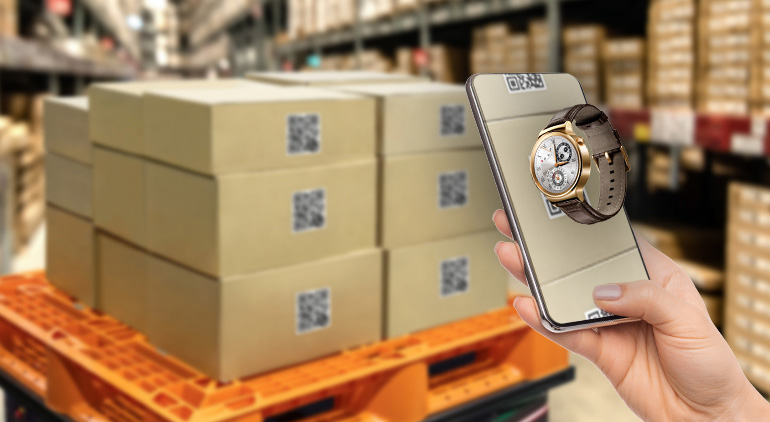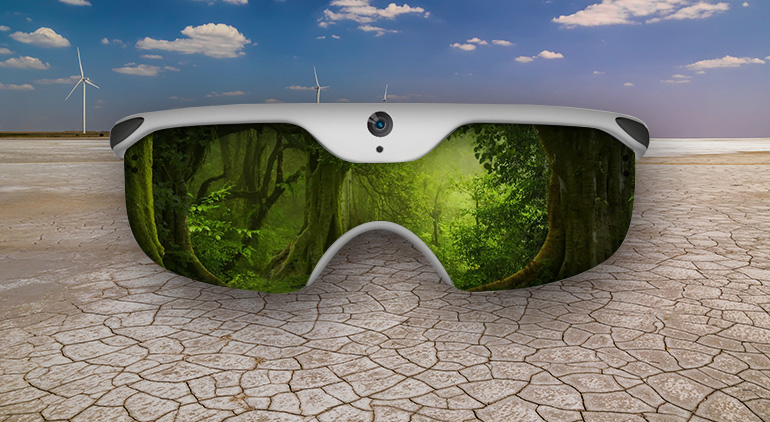Can AR and VR Help in Creating a More Sustainable Planet?
AR and VR are futuristic technologies that enterprises are incorporating to overhaul their processes and harbor the potential to foster sustainable practices, which help reduce carbon footprints.
The earth's declining environmental health is a massive concern for the future of humankind. The UN has estimated that the planet’s population could reach 9.7 billion people by 2050.
View it against the backdrop that the global plastic waste since 1950 is 8.3 billion metric tons, and one can surely understand the disaster that is waiting to happen.
Why Going Green Makes Good Business Sense?
Consumers are aware of the implications and are holding themselves and businesses to higher standards of environmental best practices. A few points that help drive the point home are:
- A Nielsen survey shows that millennials are more prone to changing habits to reduce environmental impact.
- The study reveals that 66% of consumers would pay more for a sustainably created.
- 81% of global consumers feel strongly that businesses should be environmentally conscious.
- The reuse and recycling industry is a huge area and the renewable energy market is expected to be $2.15 trillion by 2025.
- Apple is aiming to become 100% carbon neutral for its products and supply chain by 2030.
The story of Elon Musk shows how Green is for Environment and Green is also for Money.
How can AR Help Build Sustainability?
Here, we try to gauge how technologies like AR and VR can help create sustainable solutions in many sectors and how ar vr companies need to consciously adopt them to contribute to the planet's health.
1. Smart Cities
Smart Cities intend to build climate-resilient infrastructure with the help of technology add-ons that provide convenience and aid in governance.
AR and VR, combined with location or spatial intelligence, can aid in the development of integrated public spaces that are tuned to environmental preservation, health, and safety, transportation and fuel, preserving cultural heritages, and can help in the city's assets management and governance.
Augmented reality solutions are crucial for spatial planning projects by providing contextual scale and utilization, allowing the best-suited models to be created.
2. AR Packaging
 AR packaging implementation is an eco-friendly and scalable solution that increases user-to-brand engagement. The user needs to wield a smartphone to turn packaging into a particular brand discovery channel and interact with interactive and immersive to enable purchase intent, loyalty, and repeat sales.
AR packaging implementation is an eco-friendly and scalable solution that increases user-to-brand engagement. The user needs to wield a smartphone to turn packaging into a particular brand discovery channel and interact with interactive and immersive to enable purchase intent, loyalty, and repeat sales.
Savvy brands like Kellogg’s, Nestlé, Unilever, Pez, and Puma are already harnessing the sustainable AR-connected packaging benefits along with potent consumer engagement.
3. Fashion & Retail
Fast-moving fashion demands and garment production technology are currently unsustainable trends. AR and VR in retail can be harnessed to convert designs into 3D renderings and viewed from anywhere. This can help save material waste and many other pollutants like chemicals and dyes.
Holo Fashion enables designers to create prototypes in VR and Shopify, which allows customers to view some products in AR through their smartphones.
Related post: AR Shopping for People with Disabilities
4. Branding and Advertising
Burger King took a step towards sustainability, removed all plastic toys, and replaced it with a web-based augmented reality (AR) experience for the kids' meals option.
Smartphone users can scan QR codes on Burger King's toy tags, box packaging, and signage can participate in a game that challenges players to defend three 3D eggs AR-created hatchlings and receive power-up rewards.
The game also allows players to capture photos of the experience to share with friends, making it a publicity tool.
Also read: Creating Mesmerising Brand Experiences with VR Brand Promotion
5. Zero Consumption
AR created prototypes before the finalization and launch is a highly cost-effective way to save material consumption. Innumerable conceptualization and modifications can be carried out with zero consumption.
6. Reduce Carbon Footprints and Pollution
AR technology enables people to connect and network in real-time, by a real superimposition into the other's physical space, thus saving time, costs, fuel, and reducing pollution.
This is also enabling brands to experiment with big-ticket events and launches. With AR, product launches can happen anywhere, anytime, and involve a broad audience without anyone leaving the couch.
An AR Sustainable Future is Possible
The possibilities with AR are unlimited and can extend far beyond imagination. Harnessing the use of this technology can help create brands that focus on social responsibility and environmental sustainability while cutting down consumption and costs, leading to better productivity and profit margins.
The investment community also considers a company’s sustainability credentials as a benchmark of good shareholder value.
Experts in designing Innovative, Interactive, and Immersive experiences - EDIIIE, we are one of the largest AR, VR, and MR companies. Constantly aiming, adapting, and achieving, we leave no stone unturned in providing you with utmost satisfaction and the best-augmented reality, virtual reality, and mixed reality solutions.






